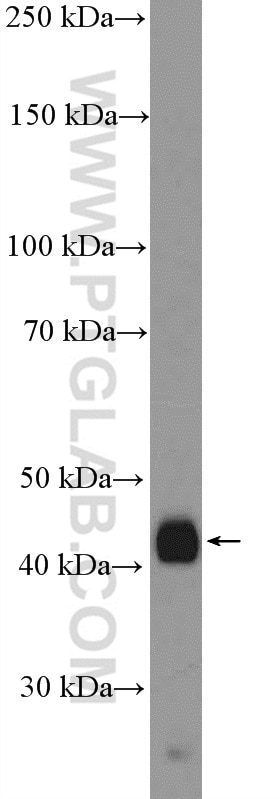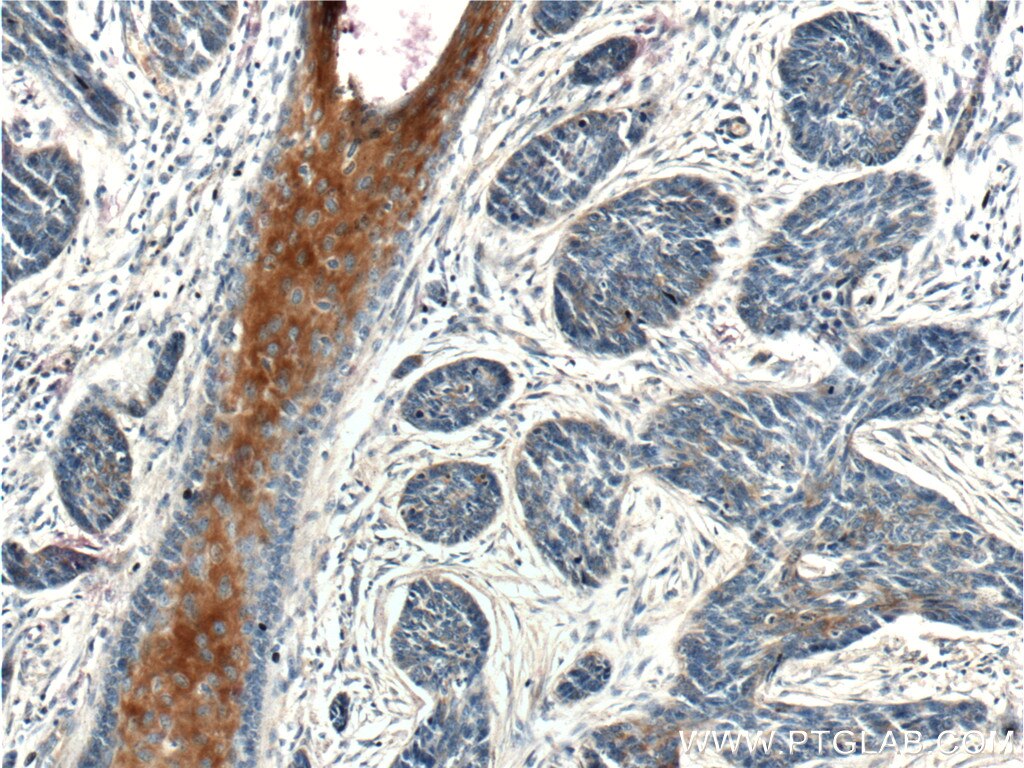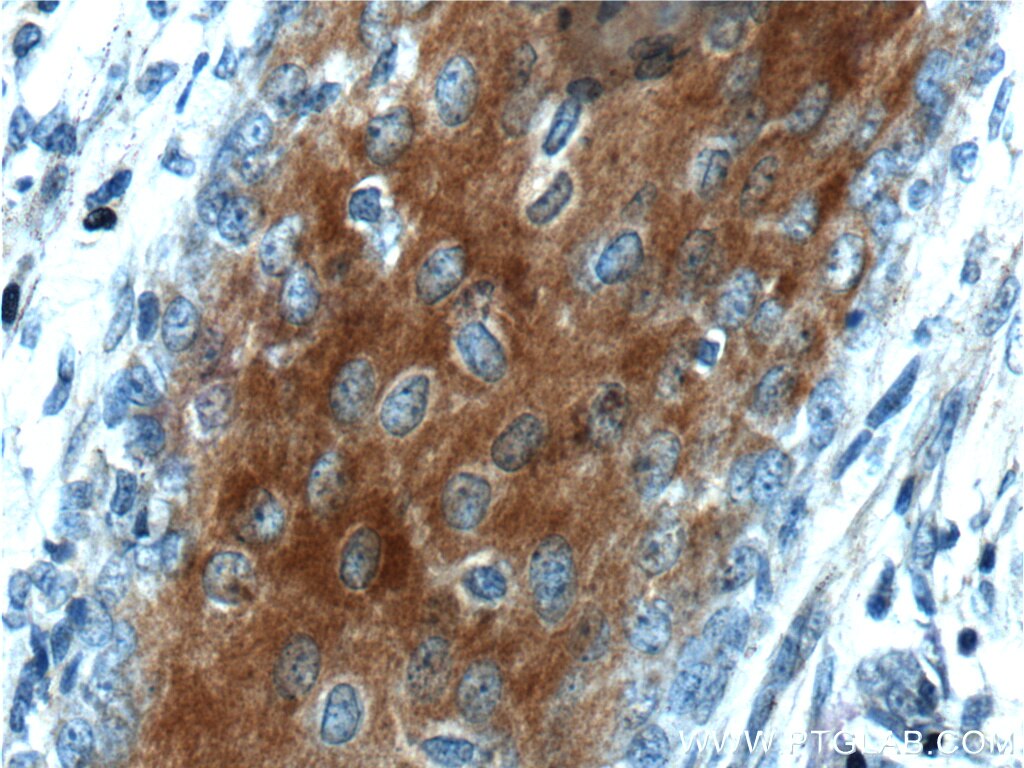XYLB Polyclonal antibody
XYLB Polyclonal Antibody for WB, IHC, ELISA
Host / Isotype
Rabbit / IgG
Reactivity
human
Applications
WB, IHC, ELISA
Conjugate
Unconjugated
Cat no : 26541-1-AP
Synonyms
Validation Data Gallery
Tested Applications
| Positive WB detected in | A431 cells |
| Positive IHC detected in | human skin cancer tissue Note: suggested antigen retrieval with TE buffer pH 9.0; (*) Alternatively, antigen retrieval may be performed with citrate buffer pH 6.0 |
Recommended dilution
| Application | Dilution |
|---|---|
| Western Blot (WB) | WB : 1:500-1:1000 |
| Immunohistochemistry (IHC) | IHC : 1:100-1:400 |
| It is recommended that this reagent should be titrated in each testing system to obtain optimal results. | |
| Sample-dependent, Check data in validation data gallery. | |
Product Information
The immunogen of 26541-1-AP is XYLB Fusion Protein expressed in E. coli.
| Tested Reactivity | human |
| Host / Isotype | Rabbit / IgG |
| Class | Polyclonal |
| Type | Antibody |
| Immunogen | XYLB fusion protein Ag19208 |
| Full Name | xylulokinase homolog (H. influenzae) |
| Calculated Molecular Weight | 536 aa, 58 kDa |
| Observed Molecular Weight | 43 kDa |
| GenBank Accession Number | BC137076 |
| Gene Symbol | XYLB |
| Gene ID (NCBI) | 9942 |
| RRID | AB_2880546 |
| Conjugate | Unconjugated |
| Form | Liquid |
| Purification Method | Antigen affinity purification |
| Storage Buffer | PBS with 0.02% sodium azide and 50% glycerol pH 7.3. |
| Storage Conditions | Store at -20°C. Stable for one year after shipment. Aliquoting is unnecessary for -20oC storage. 20ul sizes contain 0.1% BSA. |
Background Information
Human xylulokinase-like protein (XYLB), is a 58 kDa protein belongs to a family of enzymes that include fucokinase, gluconokinase, glycerokinase and xylulokinase. XYLB is a key regulator for controlling metabolic disease.XYLB also plays important roles in energy metabolism. XYLB has 2 isoforms produced by alternative splicing with the MW of 58 and 43 kDa.
Protocols
| Product Specific Protocols | |
|---|---|
| WB protocol for XYLB antibody 26541-1-AP | Download protocol |
| IHC protocol for XYLB antibody 26541-1-AP | Download protocol |
| Standard Protocols | |
|---|---|
| Click here to view our Standard Protocols |




